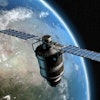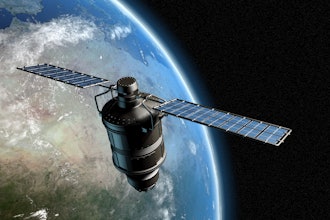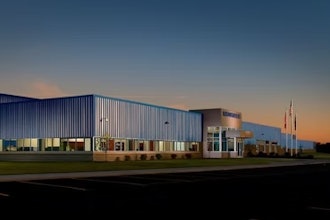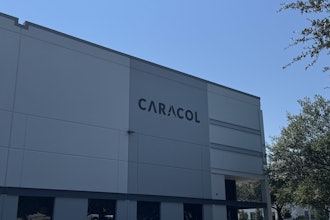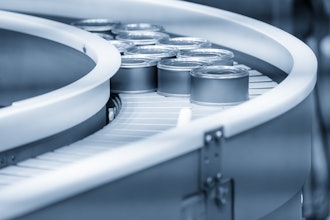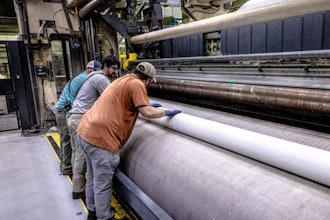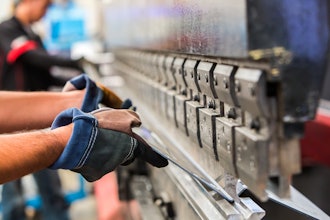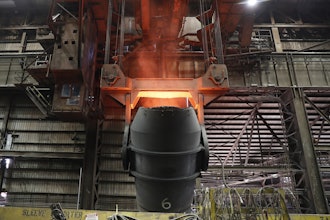
The operation of stepper motors is less intuitive than the operation of either brush DC or brushless DC motors. As a result, they are often perceived as more difficult to understand and control. However, stepper motors are positioning devices by nature, enabling the design of simpler, less complex and more compact motion systems for applications in the medical and life sciences fields, among others.
Stepper motors convert electrical pulses from the electronic drive to discrete mechanical steps, or angular steps for a rotary stepper motor. They are similar to synchronous brushless motors in that they feature a brushless design where the phases of the motor are electronically commutated with the help of a drive. This contrasts with brush DC motors, which are characterized by a mechanical commutation system that is completed by the mechanical contact of the brushes against collectors.
The architecture of stepper motors is quite similar to BLDC motors, especially in regard to the motor’s rotor and stator. The rotor is either made of a ferromagnetic toothed part (i.e., without a magnet), making it a variable reluctance stepper motor, or the rotor holds permanent magnets, making it a permanent magnet stepper motor. The magnets usually have many pole pairs to ensure high step resolution. The stator is composed of the coil windings of the phases, though it differs by the number of phases compared to a brushless motor. A typical permanent magnet stepper motor has two phases, whereas a typical brushless motor has three. These are the most-encountered motor types on the market, but it is possible to design brushless or stepper motors with a different number of phases. Note that variable reluctance stepper motors have at least three phases; otherwise, the direction of rotation would be uncertain.
Most of the time, a stepper motor is driven in open loop by applying the current in the phases independently of the rotor position. The rotor will stay locked at a given position as long as the current is maintained in the phases and does not change. For an application requiring incremental angular motion, it is very convenient to use a stepper motor in open loop. In this case, the motor requires no feedback system (like an encoder) in order to determine the rotor position. The position of the rotor is known directly based on the number of steps asked by the electronics. However, it is critical to know the load applied on the motor precisely to ensure the motor is powerful enough and to prevent stalling and losing steps.
Stepper Motor Technology and Applications
There are three main stepper motor technologies in the Portescap product portfolio:
- Can stack stepper motors. These motors are generally offered when reasonable accuracy and moderate torque are required. This permanent magnet stepper motor utilizes the simplest of techniques and designs to create an effective solution. Typical applications utilizing this technology include clinical diagnostics and valves or antenna positioning.
- Linear actuator stepper motors. These motors create translational motion with the simple operation of a can stack motor, resulting in a cost-effective and reliable motion solution. The available captive design reduces overall size and produces purely translational motion while the non-captive linear stepper design provides a longer travel stroke. Common applications utilizing linear actuators in the medical field vary from a syringe pump and electronic pipettes to different translations of components in point of care devices. This technology is also used in HVAC valves, industrial automation for adjustment mechanisms and antenna positioning in the telecommunication field.
- Disc magnet stepper motors. These motors feature a unique design characterized by a thin magnet disk. This enables finer step resolutions than permanent magnet stepper motors in a given envelope, significantly higher acceleration due to low inertia and greater top speed than conventional steppers due to a shorter magnetic circuit presenting lower iron losses. Therefore, stepper motors are ideal in applications that require fast incremental motion and excel in applications that require both the motion precision of a stepper motor and the speed and acceleration of a brushless DC motor. They are also well-suited for mobile applications, devices with size limitations and applications requiring fast and precise positioning.
Typical applications in the medical field are electronic pipettes and drug delivery systems like insulin pumps, as the motor allows dispensing of the targeted volume exactly and with excellent repeatability. They are employed for pick and place applications in the semiconductor industry, as the motor allows high dynamic and great accuracy for optimal productivity. Optical lens positioning also uses disc magnet motors because they are very compact and provide high resolution and good dynamics to position lenses. This motor technology is also used in the textile industry for yarn guides, both in open and closed loop operation, as it allows extremely high dynamics when moving the yarn guide back and forth.
Stepper Motor Terminology
Understanding the terminology surrounding stepper motors is critical to having a robust working knowledge of this motor technology. Some of the parameters are common between different motor technologies, such as electrical parameters (resistance, inductance, rated current), thermal parameters or inertia. However, there are many other characteristics, like step per revolution, that are wholly specific to stepper motors.
Intrinsic Parameters
These parameters help to assess whether the design characteristics of the motor are compatible with the application performance or how they will impact the application performance.
- Steps per revolution. This is the number of full steps the motor can do over one full revolution. This also corresponds to the number of stable positions the rotor can reach when driving the motor in full step mode.
- Step angle. The angular rotation during one full step, generally given in degrees.
- Rotor inertia. This is the inertia of the rotor.
Electrical Parameters
These parameters are useful to select the driver and set the electronic parameter properly for the instance.
- Resistance per phase, typical. This parameter depends on the length and the diameter of the magnet wire used to wind one phase coil.
- Inductance per phase, typical. This parameter depends mainly on the magnetic circuit and is proportional to the square of the number of turns of the coil.
- Electrical time constant. This parameter is important for stepper motors, as it plays a significant role in motor performance at high speed. Since steppers have a high number of magnetic poles, the phase current may not have the time to establish full during each single step, when running at high speed.
- Operating voltage. This is the maximum voltage that can be applied to one phase of the motor to reach the rated current of the motor.
- Nominal phase current (one-phase-on and two-phase-on). This is the maximum current in ampere which can be supplied continuously to the motor.
Thermal Parameters
Thermal parameters help to understand the thermal limitations and validate that the motor can be operated safely without overheating.
- Maximum coil temperature. This is the maximum temperature in degrees Celsius that the coil can support without damage. Exceeding this limit could burn the coil and would cause irreversible damage.
- Thermal resistance coil-ambient. This is the thermal resistance in degrees Celsius per watt between the coil and the ambient air around the motor, considering the motor hanging in the air. This value reflects the ability of the motor to dissipate heat to the ambient air and will reduce in case of an active cooling (heat sink, fan). Coupling the motor to a metallic part will also reduce the motor’s thermal resistance.
- Ambient temperature range. The range of the environmental temperature, in degrees Celsius, at which the motor can operate safely. Note that when operating the motor at a temperature higher than 25 C, the current needs to be adjusted to prevent overheating of the coil.
Motor Performance in Static Mode
Stepper motors can be used as positioning devices. This section will explain how the motor performs in such conditions and the main parameters to consider.
- Holding torque, nominal current. This is the maximum static torque in Newton.meter generated by the motor when energized at a nominal current. Practically, this torque can be measured by energizing one phase at the rated current and by loading the motor progressively until it loses the step; it can also be completed by energizing both phases using the two-phase-on rated current. The maximum load torque reached corresponds to the holding torque of the motor.
- Back EMF amplitude. This is the amplitude zero-peak in volts that can be measured at one phase of the motor, when the motor is back-driven at a given speed.
- Detent torque. Also called residual torque, it is given in Newton.meter. The detent torque indicated in catalogs is usually a combination of the residual torque due to the magnetic circuit and the friction torque (friction from the sleeve bearings or the ball bearings). The detent torque without friction is typically due to the attraction of the magnetic poles of the rotor in front of the slots of the stator when the motor is unenergized. It is a fourth harmonic of the torque generated by one of the motor phases. Detent torque can be useful to hold position without energizing the motor, which can save on power consumption. On the other hand, detent torque will create distortion of the total available torque, which is not desirable when driving in microstep.
- Stepper motor working point and load angle.
- Absolute accuracy two-phase on, full step mode. This is the maximum possible angular deviation per full step, from the theoretical step angle value, when the motor is energized two-phase-on. It is given in percentage of the full step angle. The accuracy depends on multiple parameters, such as friction, torque distortion due to detent torque, saturation or mechanical part tolerances. This error is non-cumulative.
Motor Performance in Dynamic Mode
It is not as easy as with other motor technologies to determine the torque of the motor in dynamic conditions at a given speed by literal calculation. Pull-in and pull-out torque curves are generally provided for every stepper motor. Note that these curves are always defined for one motor and for one specific driver, as the driver characteristics will impact the performance of the motor.
- Pull-out torque. Also known as dynamic torque, this is the maximum torque the motor can deliver at a given operating speed.
- Pull-in torque. This is the maximum torque load that can be applied to the motor when starting at a given step frequency. Unlike pull-out torque, there is no acceleration ramp generated to reach the desired speed.
- Natural resonance frequency. This corresponds to the full step frequency in step per seconds or Hertz at which the motor will be subject to instability due to the resonance phenomenon.
Conclusion
Though stepper motors may be less intuitive than other motor technologies, they are nevertheless an excellent option for powering a wide variety of applications. We hope that the above discussion provides a greater understanding of stepper motors, especially regarding their technology, key performance parameters, and the unique terminology that surrounds them. Portescap’s motion experts have decades of experience of engineering stepper motors for applications within the medical and industrial sectors. Reach out today for assistance.


